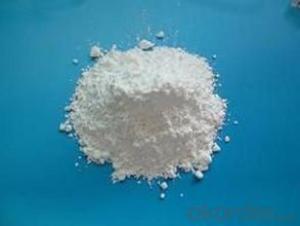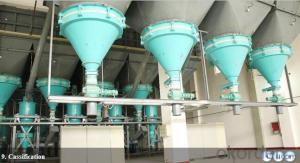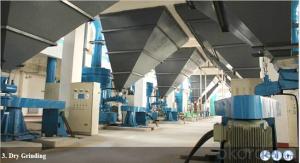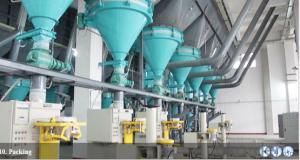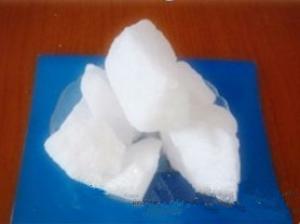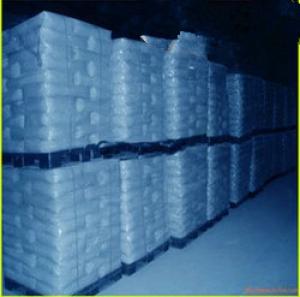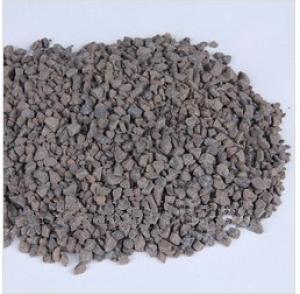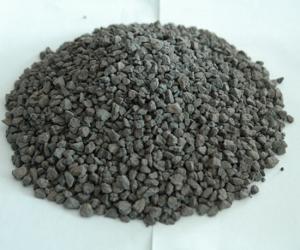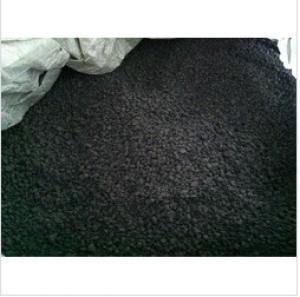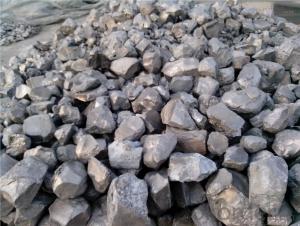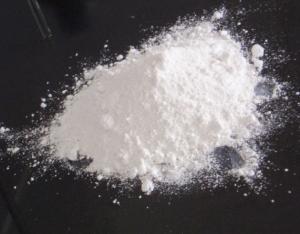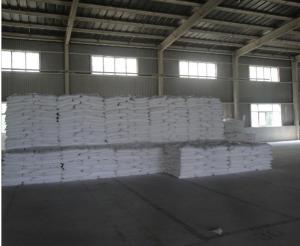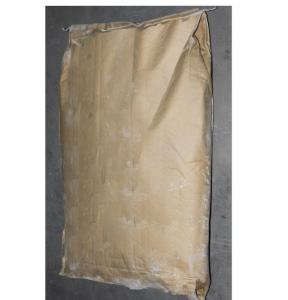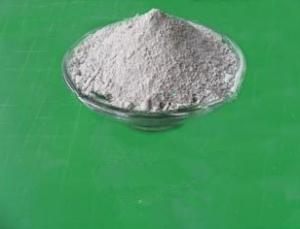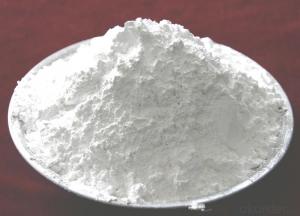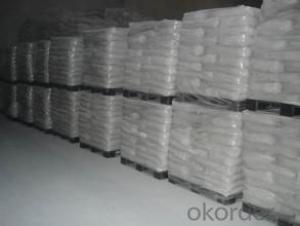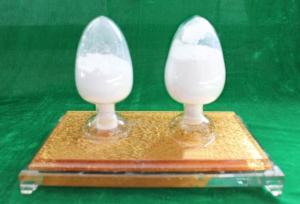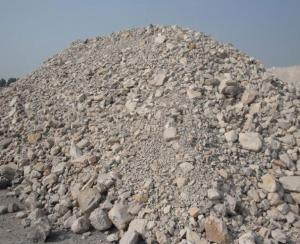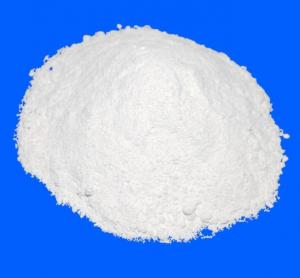CALCINED KAOLIN FOR Color (GBCK-95/96) National Standard
- Loading Port:
- Tianjin
- Payment Terms:
- TT OR LC
- Min Order Qty:
- 25 m.t.
- Supply Capability:
- 12000 m.t./month
OKorder Service Pledge
OKorder Financial Service
You Might Also Like
1. Benefits and Application
The GB-CK series of Kaolin based pigments are produced through delamination,
calcination and classification. The well-controlled processes ensure the GB series have no coarse particles and maintains an absolute minimum of 325 mesh residue, so the end user can achieve a high Hegman grind. The GB series pigments also have high brightness, strong hiding powder and superior dispersibility, and it is widely applied in latex paint, powder coating and electrophoresis coating.
Its main benefits are:
It’s the best extender of titanium dioxide with excellent opacity that can
improve efficiency and cut costs by partly replacing titanium dioxide;
It can easily disperse in water based systems;
It offers superfine particle and with excellent anti-settling property; It is inert to most acids and
alkaline at ambient temperature and offers good anticorrosive capabilities.
2. Typical Physical Properties
Item | GB-CK90 | GB-CK92 |
Brightness(T457) | 90.5%min | 92%min |
Particle Size (0-2micron)% | 50+/-2 | 60+/-5 |
Particle Size (0-10micron)% | 94% | 97% |
Refractivity | 1.62 | 1.62 |
Screen residue (325 mesh %) | 0.01max | 0.01max |
Oil Absorbency (g/100g) | 35+/-5 | 50+/-5 |
Dispersion (micron) | 55max | 50max |
pH | 5.5-7.0 | 5.5-7.0 |
Bulk Density (kg/m3) | 600 | 500 |
Specific Gravity (kg/m3) | 2600 | 2600 |
Moisture (%) | 0.5max | 0.5max |
3. Typical Chemical Properties
SiO2(%) | Al2O3(%) | Fe2O3(%) | TiO2(%) | CaO(%) | MgO(%) | CuO(%) | K2O(%) | Na2O(%) | MnO(%) |
52+/-2 | 45+/-2 | 0.50max | 1.5max | 0.4max | 0.2max | 0.004max | 0.05max | 0.15max | 0.004max |
4.Application
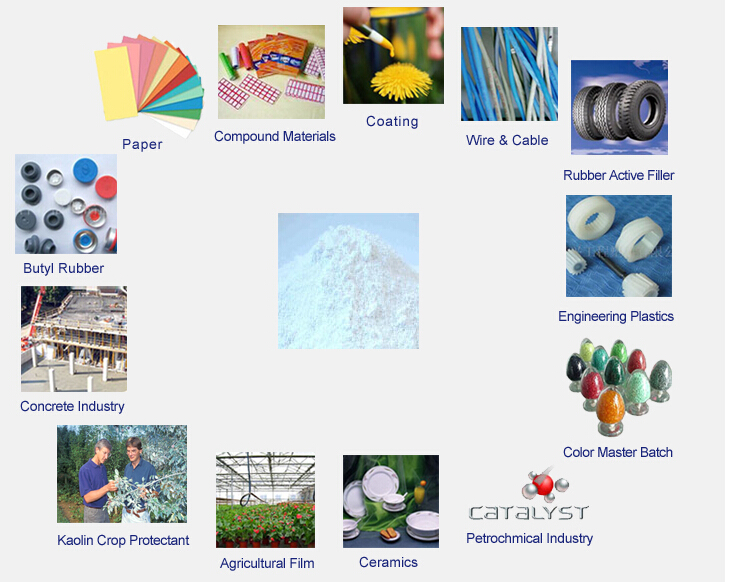
- Q:Is kaolin poisonous? What is kaolin?
- Composition: non-toxic. Kaolin kaolinite, content accounted for about 90%, the particle size is smaller than 22m, produced in China's Jiangxi province. The name of kaolinite kaolin is widely used in the field of application of ceramics, glass, paper, rubber, daily chemical industry, agriculture and so on.
- Q:Hard kaolin in the ceramic piece, which is used in which? What's the difference between washed kaolin and washed kaolin?
- Whiteness difference is big, generally after light burning, kaolin whiteness will increase, and wash water will not significantly increase whiteness.
- Q:What's the difference between nano kaolin, washed kaolin and calcined kaolin? Where is the difference?
- The purity of calcined kaolin is enough kaolin, after high temperature firing out after grinding of kaolin, in order to improve the whiteness and purification, the firing temperature according to customer's product requirements vary from 900 degrees to 1300 degrees are
- Q:Process characteristics of kaolin
- The brightness and whiteness similar process properties, equivalent to 4570 a; (a) white light irradiation wavelength.The color of kaolin is mainly related to its metal oxides or organic matter. Containing Fe2O3 was rose red, brown and yellow; containing Fe2+ was pale blue, pale green with pale brown; MnO2; organic matter tends to yellow, gray, green, black and other colors. The presence of these impurities, reduced the natural whiteness of kaolin, in which iron and titanium minerals will also affect the whiteness of the calcined, porcelain stains or scars appear. Kaolin formed by the combination of mud with water, under the action of external force deformation, external force is removed, the nature can still maintain this deformation is plasticity. Plasticity is the basis of the forming process of kaolin in the ceramic body, and also the main technical index. Plasticity index and plasticity index are usually used to indicate the plasticity. Plasticity index refers to the moisture content minus plastic limit water content of kaolin clay material liquid limit, expressed as a percentage of the plastic index W =100 (W -W liquid limit and plastic limit). The forming performance of the plasticity index representative of kaolin clay material, direct determination of available mud ball compression breakage when the load and deformation with plastic instrument, kg cm said, often plasticity index is high, the better the performance of its forming. The plasticity of kaolin can be divided into four grades.
- Q:Kaolin crusher refers to which crusher?
- The kaolin in mined, is the first to kaolin crusher was broken by other equipment for deep processing, machinery and kaolin crusher have multiple choices, according to the different choices of crusher yield high speed on the line.
- Q:Who knows kaolin? Please, great God!
- Kaolinite is a dense or loose mass, usually white. If it contains impurities, it is beige. Gaoling stone weathering or deposition into kaolin and kaolin is made of ceramic raw materials. In addition, kaolin can also be used as chemical filler, refractory material, building material, and so on. It is widely used. There is a kaolin village in Jiangxi, Jingdezhen, China, which is rich in kaolin. Hence its name. At the end of the Ming Dynasty, the mine was mined in kaolin village of Jingdezhen. It was introduced into the world mineralogy by German geologist Richthofen according to the transliteration of kaolin into "Kaolin".
- Q:Do kaolin have blue and cyan?
- Some trace metal elements which may be a different color, the specific color and the metal or metal oxide flame color color
- Q:Can kaolin be used for cosmetics?
- We usually use 325 eye kaolin + milk to wash your face. The whitening effect is very good, safe and inexpensive. It is much safer than the high-grade cosmetics called lead (heavy metal). Do not believe, you can try, and if there is a bad feeling after use, please stop immediately, indicating that your skin on three oxidation two aluminum allergic reaction.
- Q:Is activated clay kaolin?
- No, it isn't。 Activated clay is a kind of adsorbent made of clay as raw material, treated by inorganic acidification, and then rinsed and dried by water.
- Q:What is the best composition of kaolin?
- Kaolin is mainly aluminosilicate, the main component of AL2 (Si2O5) (OH) 4, or written as Al2O3 2H2O 2SiO2
1. Manufacturer Overview |
|
|---|---|
| Location | |
| Year Established | |
| Annual Output Value | |
| Main Markets | |
| Company Certifications | |
2. Manufacturer Certificates |
|
|---|---|
| a) Certification Name | |
| Range | |
| Reference | |
| Validity Period | |
3. Manufacturer Capability |
|
|---|---|
| a)Trade Capacity | |
| Nearest Port | |
| Export Percentage | |
| No.of Employees in Trade Department | |
| Language Spoken: | |
| b)Factory Information | |
| Factory Size: | |
| No. of Production Lines | |
| Contract Manufacturing | |
| Product Price Range | |
Send your message to us
CALCINED KAOLIN FOR Color (GBCK-95/96) National Standard
- Loading Port:
- Tianjin
- Payment Terms:
- TT OR LC
- Min Order Qty:
- 25 m.t.
- Supply Capability:
- 12000 m.t./month
OKorder Service Pledge
OKorder Financial Service
Similar products
New products
Hot products
Related keywords
